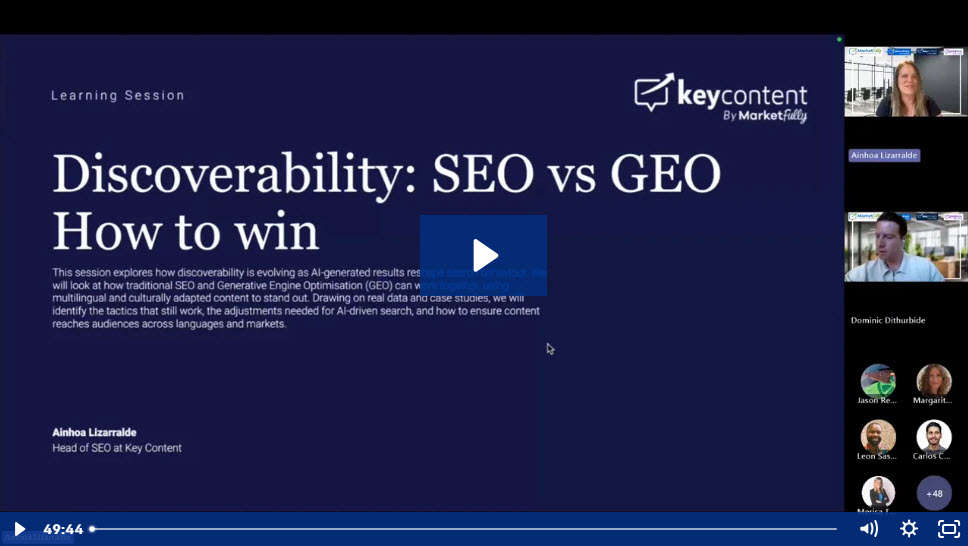Latin America’s digital climb and SEO potential
Latin America’s online landscape is growing like a tropical garden after spring rain. Today, the region is a powerhouse of digital growth, with advertisers pouring an estimated $22.25 billion into digital channels in 2024, driven by surging video and retail media spending.
Retail media, alone, is taking Latin America by storm, with nearly $2 billion spent in 2024 and forecasts potentially tripling to $5.45 billion by 2028. Internet access is spreading too, with Chile leading penetration tops at 96%, 91% for Argentina, and Brazil and Mexico hovering around 80%.
Tens of millions of young, digitally savvy consumers are searching, shopping, and sharing more online, creating a digital opportunity international brands can’t ignore anymore. u
Marketers are responding by encouraging localised content strategies and shifting budgets into immersive formats geared towards regional tastes and languages.
What this change means for SEO professionals is, that marketing strategies for Latin America need to be updated to blend deep cultural and linguistic insight with technical precision.
A rich tapestry of culture and language
Latin America is far from monolithic. Spanish is the second most-spoken language in the world (after Mandarin) and an official language in over 20 countries. Portuguese adds another layer, considering that Brazil alone accounts for the vast majority of Portuguese speakers in the Americas, with over 211 million Brazilians speaking the language. Beyond Spanish and Portuguese, LATAM is home to hundreds of indigenous languages and creoles.
Some examples include, the highlands in Peru having the Quechua (8 million speakers), while Paraguay holds Guaraní communities, and in Haiti, the populace speaks Creole, distinct from France’s French. All in all, Latin America’s 567 million internet users span a plethora of languages and identities. With over 500 million Spanish speakers inhabiting a world of cultural nuances & linguistic variations, there isn’t a one-size-fits-all strategy that can capture such a diverse audience.
Translators and content creators must treat localisation as an art, waving local idioms, customs, and humour into SEO practices.
As examples:
- Popular culture references often need to be swapped: a cheeky film joke about Def Leppard being “deaf” in Spider-Man: Across the Spider-Verse was recast using Argentina’s beloved rock band Soda Stereo so Latin American audiences would “get” the joke.
- Global events can also take on local colour – Valentine’s Day in Guatemala is Día del Cariño, while in Colombia, it falls in September and is called Día del Amor y la Amistad (Day of Love and Friendship).
These cultural details can affect search behaviour, so, it’s important to be aware of them when working in different locales.
Latin American consumers “can’t read, won’t buy” if the language or context feels foreign. Over 90% of consumers in Mexico and Spain say they are unlikely to buy products without a Spanish-language interface, and roughly 80% feel the same across the Spanish-speaking world. In practice, SEO campaigns must match the language of each market, as well as its cultural moments, from locally meaningful idioms to national holidays.

Understanding local dialects & regional vocabulary
Even within “Spanish,” there are a wide variety of tongues. Many brands often default to Mexican Spanish because of its reach, but it’s a risky move, especially considering that localisms that sound natural in Mexico can jar people from Argentina or Colombia.
As an example, Latin Americans say “celular” for cell phone, while Spaniards prefer “móvil”. In turn, Spain uses ordenador for computer, whereas many Latin markets say computadora. People in these regions address each other differently too, like Spaniards use “tú” (and plural “vosotros”), whereas Argentinians often say “vos” instead of “tú,” and even pronounce ll with a “sh” sound.
These differences have a real SEO impact.
A keyword search like “comprar móvil” might target Spain well, but miss Latin queries looking for “celular”, or content explaining a product as a teléfono móvil in Spain might need to say teléfono celular (or celular) if it’s aimed at people in Mexico.
- Spanish (Spain): Uses “móvil” (cell phone), “ordenador” (computer), and plural “vosotros”.
- Spanish (Mexico/Latin America): Uses “celular” (cell phone) and “computadora”; Spanish “usted/tú” (formal/informal).
- Rioplatense Spanish (Argentina, Uruguay): Unique voseo grammar (“vos” vs “tú” for “you”) and distinctive slang/pronunciation.
Your SEO strategy has to account for these regional dialects if you hope to make any sort of long-lasting impact. Conducting keyword research separately by country is essential, so you know things that are culturally relevant, like treating “café wifi” in Colombia differently from “Wi-Fi gratis” in Argentina.
One of the main things to consider here is, to optimise for each locale’s terminology rather than relying on a “neutral Spanish” translation alone. Native-speaking experts must create each page’s wording to fit the target audience.
Let’s get technical for multilingual SEO
Strong technical foundations are the building blocks for every successful multilingual SEO campaign. Key practices include hreflang tags, URL structure, and sitemap configuration. Each language-version page needs the correct hreflang annotations to tell Google what the intended audience is, for example, pages should be marked as es-MX for Mexican Spanish, es-AR for Argentina, and pt-BR for Brazilian Portuguese, to avoid duplicate-content penalties and make sure users see the right language version.
Websites should also use separate URLs or subdirectories per language (e.g. /es-mx/, /pt-br/), rather than hidden auto-translations. Other best practices include creating clear navigation and sitemaps for each market, as well as localising meta elements.
When you’re localising content in Latin America, you have to remember to localise every element to reflect local search intent, including call-to-action phrasing, title tags, and descriptions. For instance, a payment gateway page might prompt Brazilians with “Pagar Agora” (Pay Now), while Mexicans expect “Pagar Ahora”. Internal linking is another thing that should regionalised, like linking language-specific blog posts and landing pages within the same locale folder.
Many multilingual sites suffer from occasional misconfigured or missing hreflang tags that lead Google to serve the wrong language. Regular SEO audits (using tools like Screaming Frog), and monitoring are great practices to help catch these errors early.

Diving into content relevance in an arena of cultural nuance
You have to go further than pure SEO plumbing and make sure your content resonates culturally. Imagery, tone, and examples should feel familiar to local audiences. For instance, an e-commerce site might feature soccer stars in Brazil, regional cuisine in Mexico, or various colour schemes or humour that suit a different country’s norms.
Keep in mind that seasonal marketing must also align with local calendars, like Brazil’s Father’s Day being in August or Chile celebrating Día del Padre in June, while many others follow the June date. Events like Black Friday now thrive in Latin markets too, but awareness levels vary (Puerto Rico ~97%, Venezuela ~83%), and campaigns should adjust accordingly.
Always remember to avoid stereotypes and tokenism, and that what engages one market in Latin America may alienate another. SEO Thought leaders note that brands must “balance global consistency with local relevance,” and create content that honours each culture’s values and vernacular.
In practice, this means collaborating with subject-matter experts or influencers from each country. When done well, the payoff shows in engagement metrics and SEO performance, meaning culturally attuned content meets search intent more accurately and earns better rankings and click-through rates.
An essential human component for scaling content
Mastering multilingual SEO in Latin America ultimately comes down to the quality of the content you create. Machine translation or automated tools can kickstart localisation but routinely miss the nuances that human experts catch.
Mistakes in idiom or register can confuse readers, or worse, result in mistranslating intent. When human linguists and subject-matter experts are involved, they create content that’s accurate, context-aware, and in line with local sensibilities.
At Key Content, our “in-language” content is written by native-speaking experts who understand each industry and audience. We pair SEO strategists with local writers and make sure there’s adherence to EEAT (experience, expertise, authoritativeness, trustworthiness).
As Google emphasises, high-authority content is built by knowledgeable humans. By leveraging expert interviews, regional research and custom editorial processes, we produce highly ranked material that resonates with local audiences. This human-led methodology is essential for Latin America’s various niches (finance, healthcare, e-commerce), where trust and accuracy are non-negotiable.
Strategising at its peak
In practice, a strong Latin America SEO strategy includes:
- Market segmentation: Identify key countries (e.g. Brazil, Mexico, Colombia, Argentina) and allocate resources proportionally to their market size.
- Localised keyword research: Build separate keyword lists for Spanish, Portuguese, and (where relevant) Creole or indigenous terms. Use local tools (SEMrush Google Trends) or settings to capture real search queries in each market.
- Technical SEO audit: Make sure every page variant has proper hreflang tags and a crawlable structure. Check page load speed regionally (mobile networks can vary) and local host/CDN setups.
- Content calibration: Align imagery, topics, and tone with the culture of your targeted audience.
- Native copywriting: Always use native speakers with market knowledge, and who can adapt idioms (“translate meaning, not words”) and spot any insensitivity, for translations and original content.
- Ongoing monitoring: Track rankings and traffic by country language. Monitor for indexation issues (e.g. a page accidentally blocked or mistagged) and user behaviour differences (click rates, dwell time) to improve strategies.
By intertwining data-driven SEO tactics and nuanced local content, brands can take advantage of Latin America’s growing digital market. The region’s appetite for online media is strong, with a discerning audience. Companies that respect linguistic diversity, cultural identity, and search intent will thrive in these markets, and Key Content is ready to guide you through the process with expert-led solutions.





